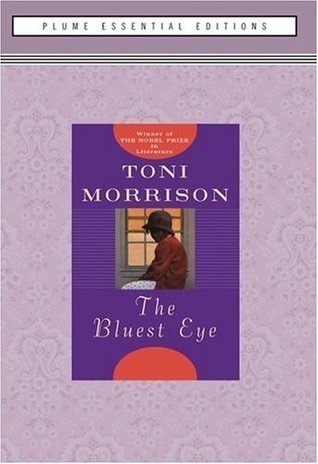The Bluest Eye by Toni Morrison
Review of The Bluest Eye by Toni Morrison
The Bluest Eye by Toni Morrison (2005). Published by Plume.
As my last semester of graduate school begins to wind down, I find that I am spending less time doing some of the things that I did while doing work. When I finished up my thesis and had it prepped and ready to go during for the committee to review, I wasn’t listening to the audiobooks as fervently as I was before.
I think what majorly contributed to this is a very young undergrad at school totaled my car, and that was where I really listened to audiobooks as I drove to and from school. As it turns out, it looks like I am not going to have a car anymore, so I really might not be listening to audiobooks anymore until I get a full-time job.
Long-winded story aside, The Bluest Eye was one of the last audiobooks I got through before the accident, and it was a book I was meaning to read for the longest time. I always told myself I was going to read Toni Morrison, and then never actually got around to it.
I’m very talented solely at procrastinating on reading the books and watching the movies I want to consume the most. I swear it’s a vicious cycle, and I’m aware of it, but have never broken the groove.
Anyways, here’s my review! I’ll be slowly but surely getting through Morrison’s other books before now.
A young Black girl is constantly put down because of her appearance, making her want to appear more white.
This novel is set in the year 1941, in Ohio. Fun fact: Morrison herself is actually from Ohio, so she is kind of writing the landscapes she herself probably grew up around and witnessed as a young child. The story is told through a series of vignettes, so if you’re not expecting random flashbacks and pieces that aren’t in chronological order, then tough luck on you.
We meet the main family members first: there’s Claudia, who is nine. She lives with her parents and sister, Frieda, in Ohio, but their home also has some other occupants: a tenant named Henry, and a foster child named Pecola. We learn that Pecola grew up under terrible conditions, as her father was abusive, and her family had no money.
Pecola is actually our main character, and despite her difficult life already, everyone constantly tells her that they think she is ugly. Because of this, she gains a major complex, and finds herself constantly wishing that she had blue eyes and would become so much more beautiful than she actually is.
Throughout the novel, we also learn more about Pecola’s parents, who lived inside of a very white and religious communities despite being African American.
Her father, who first know as abusive and not really proactive in good ways in Pecola’s life, spent his days being young looking for his father. There’s also a moment where he is forced to have a sexual encounter in front of white men, adding even more to the trauma.
Not long after that, he met Pecola’s mother Pauline, and they left Kentucky behind for Ohio. Despite the passionate love they had at the beginning of their relationship, they eventually fell out with each other. Pauline also has a complex where she believes love is only destined for beautiful people, and she considers herself to be ugly.
It becomes increasingly obvious that Pauline’s beliefs are the root of Pecola’s problems later on in life. Pauline eventually becomes a servant for a family that’s white and wealthy, and she claims that this is where she feels most alive.
Eventually, Pecola does leave behind the sisters and their family to go and live with her parents. But, when she does that, her father rapes her while she is doing the dishes, and her mother does not believe her when she tells her. Pecola becomes pregnant, and the community learns more about what really happened.
Pecola then finds a man who promises her blue eyes, and he tricks her into poisoning a dog. As the dog dies, Pecola believes she has been given her blue eyes, and then she begins to majorly decline mentally. The sisters are the only ones who hope Pecola and her child get better.
Instead of saving their money for a bicycle, as they originally wished, Claudia and Frieda buy marigold seeds in hopes that will help the baby survive. They never bloom, and the child dies.
We then learn in the concluding sections of the novel that Pecola’s feelings and mental health went down after the rape done by her father. She thinks people treat her differently now because she has blue eyes, and that this is what she always wanted. Her father dies not long after the baby’s death, and Claudia, as the narrator, laments at how others used Pecola as an example to make themselves feel better.
Overall Thoughts
This is a pretty bleak novel throughout its narrative, but there is so much to learn from novels like these. I found myself incredibly saddened by the circumstances that lead to Pecola’s mental health eventually just leaving her.
Like this poor child—it’s emotionally devastating to get through this throughout the course of the novel. I was glad I was listening to this through an audiobook, as I think it would have been difficult to get through it in a paperback without taking a ton of breaks. Listening to it during work or while driving really helped make it more digestible.
If you already haven’t read this book and are interested, I highly recommend it!
Follow me below on Instagram and Goodreads for more.


![Jeju-do (제주도) is one of those places that reminds you of how stunning the world is
[7.12.2024 부터 7.14.2024 까지]](https://images.squarespace-cdn.com/content/v1/5ea1f794501b7153b29e7cd7/1721033601522-554E76HR01JUHDWZBJ1I/image-asset.jpeg)









